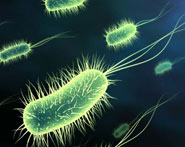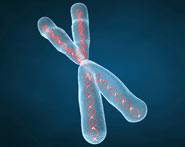


 النبات
النبات
 الحيوان
الحيوان
 الأحياء المجهرية
الأحياء المجهرية
 علم الأمراض
علم الأمراض
 التقانة الإحيائية
التقانة الإحيائية
 التقنية الحيوية المكروبية
التقنية الحيوية المكروبية
 التقنية الحياتية النانوية
التقنية الحياتية النانوية
 علم الأجنة
علم الأجنة
 الأحياء الجزيئي
الأحياء الجزيئي
 علم وظائف الأعضاء
علم وظائف الأعضاء
 الغدد
الغدد
 المضادات الحيوية
المضادات الحيوية|
Read More
Date: 25-12-2020
Date: 24-12-2020
Date: 29-2-2016
|
Subunit vaccines contain part of a pathogen which can be targeted by a neu tralizing immune response. The targeted antigens can be formulated as highly purified proteins, polysaccharides, glycoproteins, or synthetic pep tides; nucleic acids or vectors expressing target antigens; virus like particles (VLPs) displaying antigen on their surface, or viral vectors expressing anti gens from their genomes (Foged, 2011). The strength of this approach is that the immune response is targeted to specific antigens, which can then induce neutralization of the pathogen. It is sometimes challenging to identify those antigens that would evoke a neutralizing response—for example, a particular protein may be highly expressed on the surface of a pathogen but if it is highly variable, it may evade vaccine-induced antibodies.
Generally, subunit vaccines have a good safety profile as they contain isolated proteins, protein subfragments, or glycans (Vartak & Sucheck, 2016). Although subunit vaccines are safer and sometimes easier to manufacture than whole pathogens, nonviral vector-based vaccines usually require formulation with adjuvants to elicit strong immunogenicity (Foged, 2011; Moyle & Toth, 2013). The first recombinant protein vaccine for hepatitis B virus, is a VLP derived from hepatitis B virus surface antigen. The genetic code for the viral protein was inserted into the genome of yeast cells, and as the cells multiply the viral protein is expressed and forms VLPs when the yeast is lysed (Ho et al., 2020). Similar recombinant vaccines have been produced against human papillomavirus (two VLP vaccines), shingles (herpes zoster; recombinant glycoprotein in adjuvant), meningococcus, and pneumococcus (both bacterial glycans conjugated to protein) (James et al., 2018; McCarthy et al., 2018; Reglinski et al., 2018; Sharma & Sharma, 2007).
Although subunit vaccines are safer than LAV, they are less effective. They lack pathogen-associated molecular patterns, which are recognized by the host immune system resulting in a strong innate response (Demento et al., 2011). Immunopotentiation of a subunit vaccine can be achieved by the administration of booster doses or adjuvants, or by using a carrier system, such as a viral vector (Lee & Nguyen, 2015; Stauffer et al., 2006). A vaccine carrier offers a delivery system, to enhance vaccine bioavailability and potency. Recent studies demonstrated that modulation of the physiochemical properties of these carriers can achieve optimal antigen presentation, endosomal escape, particle biodistribution, and cellular trafficking (Foged, 2011; Vartak & Sucheck, 2016). They can also be modified with adjuvants, to augment humoral and cellular immunological responses against the antigen. Nanoparticle vaccine carriers including liposomes, polymeric nanoparticles, and inorganic nanoparticles are able to transport antigens to immune cells by targeting specific receptors, and are being explored for use in immunotherapy against cancer and infectious diseases (Moyle & Toth, 2013). Carrier systems are described in greater detail in Chapter 9, Adjuvants, immunomodulators, and adaptogens. Subunit vaccines have shown promise in the prevention of diseases such as human cytomegalovirus, tetanus, malaria, Salmonella enterica serovar enteritis infections, and SARS-CoV-2 (Anderholm et al., 2016; Greenwood, 2014; Saylor et al., 2020; Wang et al., 2020).
References
--------------
1- Foged, C. (2011). Subunit vaccines of the future: The need for safe, customized and optimized particulate delivery systems. Therapeutic Delivery., 2(8), 1057 1077. Available from https://doi.org/10.4155/tde.11.68. Available from 22826868.
2- Vartak, A., & Sucheck, S. J. (2016). Recent advances in subunit vaccine carriers. Vaccines (Basel), 4(2), 12. Available from https://doi.org/10.3390/vaccines4020012. Available from 27104575, PMCID: PMC4931629.
3- Moyle, P. M., & Toth, I. (2013). Modern subunit vaccines: Development, components, and research opportunities. ChemMedChem., 8(3), 360 376. Available from https://doi.org/ 10.1002/cmdc.201200487, Epub 2013 Jan 11. Available from 23316023.
4- Ho, J. K., Jeevan-Raj, B., Netter, H. J., & Hepatitis, B. (2020). Virus (HBV) subviral particles as protective vaccines and vaccine platforms. Viruses., 12(2), 126. Available from https://doi. org/10.3390/v12020126. Available from 31973017, PMCID: PMC7077199.
5- James, S. F., Chahine, E. B., Sucher, A. J., & Hanna, C. (2018). Shingrix: The new adjuvanted recombinant herpes zoster vaccine. The Annals of Pharmacotherapy, 52(7), 673 680. Available from https://doi.org/10.1177/1060028018758431, Epub 2018 Feb 18. Available from 29457489.
6- McCarthy, P. C., Sharyan, A., & Sheikhi Moghaddam, L. (2018). Meningococcal vaccines: Current status and emerging strategies. Vaccines (Basel)., 6(1), 12. Available from https:// doi.org/10.3390/vaccines6010012. Available from 29495347, PMCID: PMC5874653.
7- Reglinski, M., Ercoli, G., Plumptre, C., Kay, E., Petersen, F. C., Paton, J. C., Wren, B. W., & Brown, J. S. (2018). A recombinant conjugated pneumococcal vaccine that protects against murine infections with a similar efficacy to Prevnar-13. NPJ Vaccines., 3, 53. Available from https://doi.org/10.1038/s41541-018-0090-4. Available from 30393571, PMCID: PMC6208403.
8- Sharma, R., & Sharma, C. L. (2007). Quadrivalent human papillomavirus recombinant vaccine: The first vaccine for cervical cancers. Journal of Cancer Research and Therapeutics, 3(2), 92 95. Available from https://doi.org/10.4103/0973-1482.34686. Available from 17998730.
9- Demento, S. L., Siefert, A. L., Bandyopadhyay, A., Sharp, F. A., & Fahmy, T. M. (2011). Pathogen-associated molecular patterns on biomaterials: A paradigm for engineering new vaccines. Trends in Biotechnology, 29(6), 294 306. Available from https://doi.org/10.1016/ j.tibtech.2011.02.004, Epub 2011 Apr 2. Available from 21459467.
10- Lee, S., & Nguyen, M. T. (2015). Recent advances of vaccine adjuvants for infectious diseases. Immune Network., 15(2), 51 57. Available from https://doi.org/10.4110/in.2015.15.2.51, Epub 2015 Apr 23. Available from 25922593.
11- Stauffer, F., El-Bacha, T., & Da Poian, A. T. (2006). Advances in the development of inacti vated virus vaccines. Recent Patents on Anti-Infective Drug Discovery., 1(3), 291 296. Available from https://doi.org/10.2174/157489106778777673. Available from 18221154.
12- Vartak, A., & Sucheck, S. J. (2016). Recent advances in subunit vaccine carriers. Vaccines (Basel), 4(2), 12. Available from https://doi.org/10.3390/vaccines4020012. Available from 27104575, PMCID: PMC4931629.



|
|
|
|
لصحة القلب والأمعاء.. 8 أطعمة لا غنى عنها
|
|
|
|
|
|
|
حل سحري لخلايا البيروفسكايت الشمسية.. يرفع كفاءتها إلى 26%
|
|
|
|
|
|
|
جامعة الكفيل: شراكتنا مع المؤسّسات الرائدة تفتح آفاقًا جديدة للارتقاء بجودة التعليم الطبّي في العراق
|
|
|